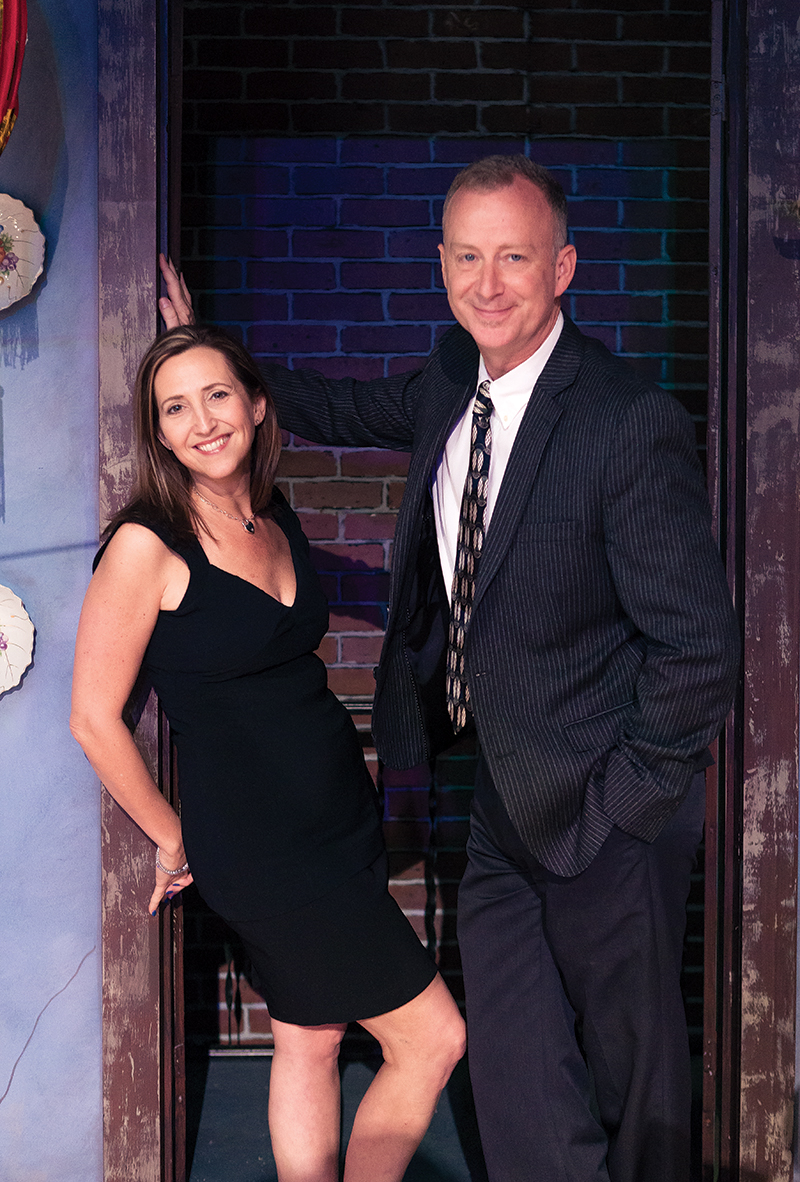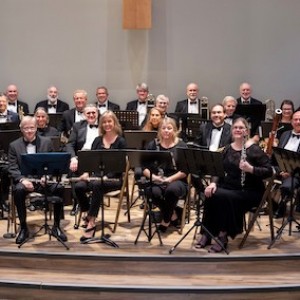When The Players Theatre was founded in 1929, it had no home and played its first seasons in a series of abandoned clubhouses, furniture stores and warehouses. 86 seasons later, The Players has its own theater, a national reputation and just last October was recognized by the Greater Sarasota Chamber of Commerce for its extended service to the community.

“A bunch of people got together and said, ‘Hey, let’s do some shows,’” says Jeffery Kin, artistic director for The Players, of the theater’s humble beginnings, stage-less and underfunded. “But that’s what they did and that’s how it started.” Founded by Out-Of-Door School (now Out-of-Door Academy) owners Fanneal Harrison and Catherine Gavin, the theater’s first season’s productions were directed by school faculty such as Adelaide Beane and V. Fredrika Gray. The Players moved from space to space, including the old Siesta Key Club house. An early break came in the form of a donated warehouse on Main Street, which provided all the amenities a growing theater could ask for, as well as an old elevator shaft running smack dab through the middle of the stage. Not until 1936 did The Players get its own building, and by then the group had already made a name for itself. Beane had gone on to Broadway, as had a young Players actor named Montgomery Clift, and the City of Sarasota donated the land to give The Players a permanent home.
In the years following, Clift went on to become one of Hollywood’s first great method actors, garnering multiple Oscar nominations and rivaled in his day only by Marlon Brando. The Players’ grew as well, adding musicals to the repertoire and children’s programs to the calendar. Working with schools, other theaters and even the local radio station, The Players’ became an indispensable community resource and the hub around which artistic enterprise could grow. “We’re definitely the fabric of the arts community,” says Players Managing Director Michelle Bianchi Pingel. With Kin, Pingel takes charge of the 15 staff members and over 700 volunteers that make The Players possible today, and it’s to them that she and Kin give the lion’s share of the credit. As a community theater, The Players stands tall, rivaling the “big guns” from across the country, but with the amount of funding available, that would be entirely impossible without the steady stream of volunteers that staff the halls, build the stages and bring it all together come curtain call. The Sarasota community itself is on stage. “The show isn’t their job,” says Kin. “It’s their passion. They have the love of theater and the desire to live their dream, and that comes through in our shows.”
One of the biggest challenges, according to Kin and Pingel, is that with nearly 85 percent of its income arriving in the form of ticket sales, The Players operates under more pressure than most to stay connected to the community and on top of the changing times. One underperforming show can have a marked impact on the whole season and the theater itself. With that in mind, operating in Sarasota appears both a blessing and a curse. On the one hand, Kin reports that the Sarasota audience is a sophisticated one, exploring and experimenting with the idea of what can be shown on stage. “We’re producing plays that I don’t think my predecessors ever would have considered,” he says. The resulting effect is that he must continually ride that ever-changing balance between progressive and safe. “What worked eight or even five years ago doesn’t work anymore,” says Kin, who spends at least six months planning each season. Sometimes there’s backlash, such as at a recent showing of Cabaret, where Kin says they “showed a little naked butt.” Some folks didn’t appreciate it and said so, but there was an equal, if not greater, response from those who enjoyed it. In the end, Kin feels confident bringing the fringe to the stage a few times a season, knowing the audience will at least give it a chance. “You might never have heard of it, but that might be the play that speaks to you,” says Kin. “It’s my job to produce it.”
Expanding programming to meet the needs and wants of the community has been a central mission. “Eight years ago, the Broadway Series was all musicals,” says Kin, who fought to bring straight plays into the series, which proved to be successful. “It was a challenge to get people to buy into the fact that we could do [non-musical] plays and they would sell well.” The audience was there and now The Players annually produces two straight plays during the Broadway Series and a slew through the summer. It proved to be an economic benefit as well, as musicals, on average, cost more to produce.
Though audiences and theater professionals may wish it could be all about the art, economics plays an essential role, and any institution that can survive for 86 years in the business has to know how to achieve balance between artistic and financial success. The 2008 recession took its toll on the country, and the Suncoast’s theater scene was no exception. With stages and companies closing down, The Players had to adapt to survive. An unexpected bright spot came from The Players’ reliance on day-to-day ticket sales. When the grant money dried up and philanthropic giving fell to the wayside, many institutions were hit hard, but not The Players. “We never banked on that money,” says Pingel. A true community theater, The Players lives on the ongoing enthusiasm of great swaths of the population, each giving their bit for each show, not the deep pockets of a devoted and generous few.
Still, The Players tightened its belt along with the rest of the nation, slashing production budgets by 30 percent twice in two consecutive years. Pingel and Kin took voluntary pay cuts to keep the lights on, as did the rest of the staff, on the promise from Kin and Pingel that it would be a temporary situation. Today, pay has long been restored and the theater is again on the path to expansion. “We made good on our promise,” says Pingel. This speaks to one of Kin’s favorite aspects of The Players, its professional nature. “It’s not the number of people in your audience and it’s almost not about the quality of your shows,” he says. “Being a professional is how you treat people.”
And it’s this reputation for professionalism and perseverance that The Players is known for across the nation, spreading as far as community theaters in Alaska. “People know us, they know our history and they tend to look to us for guidance,” says Pingel, regarding the yearly conferences that both she and Kin attend, where community theater professionals swap stories, advice and trade secrets. “I was thinking I was going to be taking notes,” says Kin, “but they’re asking me questions.”
One of the things they’re most often asked about is the new split-management system that made Kin and Pingel dual heads of The Players, separating the roles of artistic and managing director and placing them on equal footing at the top of the organization. “We can let [Kin] be creative and artistic and get us where we need to be with our product,” says Pingel, who holds the “pursestrings” and directs the more overtly business-related aspect of the theater. “I don’t have to worry about that. I know she’s got it,” says Kin. Still, they rule the roost as a pair, consulting together on all major decisions, with creative and business suggestions flowing freely from both. “You can see that taking hold across the nation,” says Pingel, including in Sarasota itself, where Florida Studio Theatre runs under the dual management of Richard and Rebecca Hopkins and Asolo Rep Theater under Michael Donald Edwards and Linda DiGabriele. The exact balance of authority may differ, but the concept remains the same. “That’s made our theater strong over the past couple years.”
With that strength came the announcement of the first endowment for the theater, launched last season with the aim of eventually providing a secure and sustainable future for The Players. Staring down the 100-year mark, Pingel is also excited at the possibility of building a new theater, but it’s still very much discussion.
With alums such as Charlie Barnett recently landing a role on NBC’s Chicago Fire, Drew Foster in Dr. Zhivago on Broadway and Syesha Mercado leading Dreamgirls on a national tour and appearing in the Chicago run of the acclaimed Book of Mormon, The Players remains a local springboard for the national stage, but Kin and Pingel say it’s still all about the community. “That’s what makes us different from any other theater or arts organization in town,” says Kin. “We don’t bring in talent from out of state or out of the city even. That’s why people still call us and say, ‘My mom was in a show in 1957, can I look at that playbill?’ It comes down to that feeling of community.”










